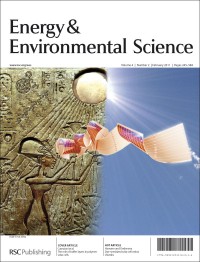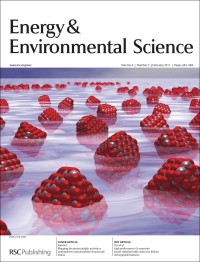February’s issue of Energy & Environmental Science is now published online – take a look at this great issue today
 This issue’s very artistic outside front cover* highlights the crucial role of electrode buffer layers for the overall performance of polymer solar cells, as discussed in the Review by Nadia Camaioni and colleagues.
This issue’s very artistic outside front cover* highlights the crucial role of electrode buffer layers for the overall performance of polymer solar cells, as discussed in the Review by Nadia Camaioni and colleagues.
The role of buffer layers in polymer solar cells
Riccardo Po, Chiara Carbonera, Andrea Bernardi and Nadia Camaioni
Energy Environ. Sci., 2011, 4, 285-310
The inside front cover (equally as impressive artwork!) features the work of Amanda Barnard, looking at the photocatalytic activity or potential free radical toxicity of titania at the nanoscale.
Mapping the photocatalytic activity or potential free radical toxicity of nanoscale titania
Amanda S. Barnard
Energy Environ. Sci., 2011, 4, 439-443
*Image adapted by Dr Maddalena Pezzani from Graur Razvan Ionut / FreeDigitalPhotos.net (image of sky), Sapere.it (image of hieroglyphic carvings), and Konarka Power Plastic(R) by George Disario (PV module). Image reproduced by permission of Dr Nadia Camaioni from Energy Environ. Sci., 2011, 4, 285.












